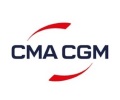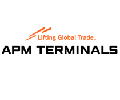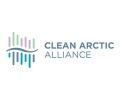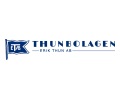Asia to focus on ADNOC’s naphtha term talks, Saudi’s Nov LPG term nominations this week

The UAE’s ADNOC naphtha 2020 term contract renewal discussions and Saudi Aramco’s acceptance of LPG buyers’ November term nominations will dominate the light ends agenda this week, amid brewing tensions in the Middle East, market sources said.
The emerging optimism that Saudi Arabia’s full crude oil production will be restored to normal sooner than expected was tempered by Friday’s incident where an Iranian-owned Suezmax was hit by missiles near Jeddah, prompting fears that shipowners might not want to ply the troubled region and that war premiums could rise and increase overall costs, the sources said.
The market is also taking stock of the impact Typhoon Hagibis — which made landfall in Japan on Saturday October 12 — had on shipping and refining operations.
EYES ON ADNOC NAPHTHA TALKS
ADNOC’s term negotiations with its buyers for the renewal of January-December 2020 naphtha supplies will be the focus of Asian naphtha participants this week as the Middle Eastern supplier begins its talks in Thailand on Monday.
The supply crunch in the Persian Gulf given reduced exports from Saudi Aramco and concerns of rising war premiums following the attack on the Iranian tanker Friday has left buyers extremely worried of high premiums going into the talks, market sources said.
This comes as the FOB AG spot premium assessed by S&P Global Platts hit a 6.5-year high of $39/mt Friday, in lieu of supply tightness and healthy appetite from petrochemical producers.
The market expects Northeast Asia and Middle East premiums to continue to climb this week as Asian steam crackers are running at full tilt in the absence of scheduled turnarounds, and as the appetite for naphtha returns due to prevailing unfavourable economics to using LPG as a feedstock, industry sources said.
“The market is on fire,” a Singapore-based naphtha trader said.
The CFR Japan naphtha crack against front month ICE Brent crude futures surged to a one-year high of $87.25/mt at the Asian close Friday. The crack was last higher at $89.60/mt on October 9, 2018, Platts data showed.
SAUDI NOV LPG ACCEPTANCE TO SET DIRECTION
Saudi Aramco’s acceptances of November-lifting term nominations, due this week, will set the market direction and provide proof that the kingdom’s assurances of full crude production capacity may be restored ahead of the end-November target, and in turn restore LPG to export markets.
With Qatari and ADNOC’s November acceptances largely showing no cuts and minor delays, resumption of normal Saudi shipments will offer relief to importers in Indonesia and India, where Q4 demand is healthy. But Friday’s tanker incident might raise concerns of cost increases in the region.
Meanwhile, the steep backwardation — November/December CP propane swaps at plus $11/mt Friday — might delay winter stockbuilding in Japan.
“According to weather forecasts last week, this Q4 is relatively warm compared with last year. If true, demand should be mild,” a Japanese trader said. “And if this backwardation continues to widen, Japanese importers will make their procurement at a later stage. Importers’ inventory looks high until H1 November at least.”
Shipment disruptions caused by Typhoon Hagibis will limit North Asian imports, while delaying ships from returning to the Middle East, adding upward pressure to VLGC rates that have jumped to four-year highs above $80/mt.
VOLATILE GASOLINE
The Asian gasoline market is expected to see increased volatility throughout the week, as geopolitical developments are likely to swing sentiment in light of firm regional fundamentals, industry sources said.
In the immediate term, eyes will remain fixed on brewing tensions in the Middle East following Friday’s attack on the Iranian tanker. While the impact on gasoline demand-supply dynamics is expected to be limited, freight rates for delivering refined products into the Middle East could remain at elevated levels, particularly since the attack follows closely after the attacks on Saudi Arabia’s oil infrastructure in mid-September.
Source: Platts

 Hellenic Shipping News Worldwide Hellenic Shipping News Worldwide, Online Daily Newspaper on Hellenic and International Shipping
Hellenic Shipping News Worldwide Hellenic Shipping News Worldwide, Online Daily Newspaper on Hellenic and International Shipping





















 PG-Software
PG-Software